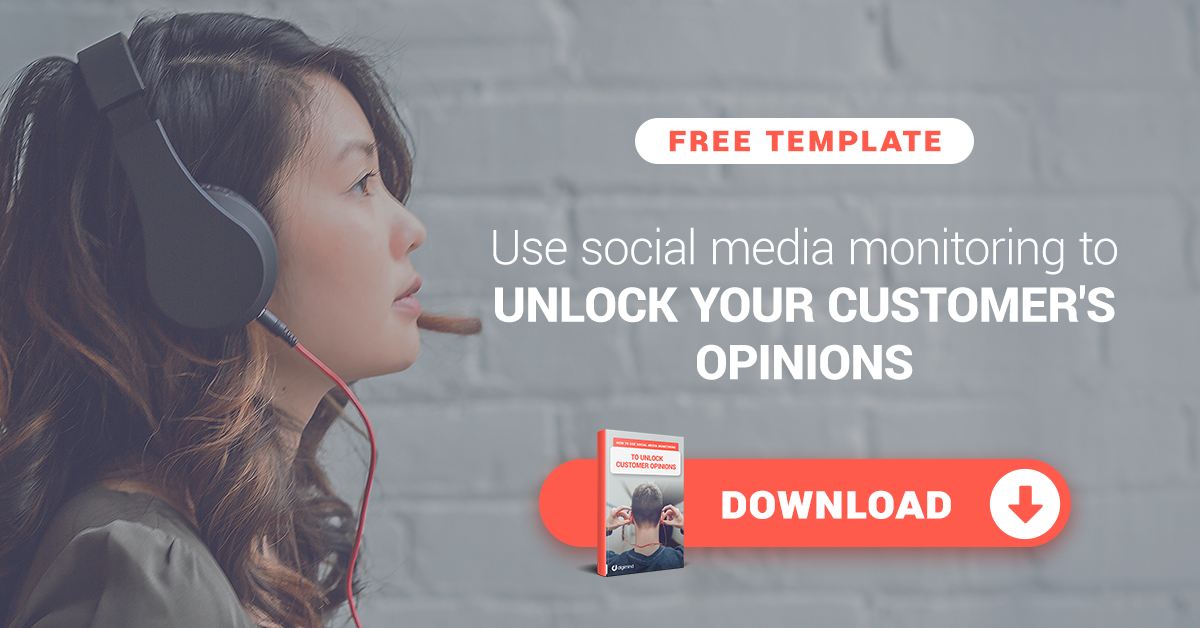Deliver a Winning Customer Marketing Strategy With Real-Time Insights in 3 Steps
With existing customers making up 65% of a company’s business (Gartner), customer retention is critical to your bottom line. Yet, a study by Bain & Company found 60 - 80% of customers who describe themselves as ‘satisfied’ do not go back to do more business with the company that initially satisfied them.
The reason is simple: lack of connection between brand and customer. As brands face increasing challenges in driving customer loyalty, retention and advocacy in an age of choice, marketers need to evolve their customer marketing strategies to deliver personalized experiences to engage and nurture strong customer-centric relationships with customers.
What is Customer Marketing and How Can it be Boosted with Real-Time Insights from Social Media?
Customer marketing denotes campaigns and activities specifically targeted at your customer base, aimed at strengthening customer relationships to drive increased engagement with the brand and eventually, repeat sales.
A good customer marketing strategy puts your customers first by delivering experiences that not only help them to meet their needs, but also surprise and delight them. With over 3 billion active social media users worldwide (We Are Social, Global Statshot: Digital in Q3 2017), social media is rich in honest insights on consumer perceptions and expectations of brands and industries. Marketers can leverage these real-time insights to boost their customer marketing by:
- Monitoring and responding to customer conversations,
- Creating better targeted campaigns, and
- Leveraging user generated content (UGC)
1. Monitor and Respond to Customer Conversations
Brands can motivate customers to stay loyal by showing their ability to actively listen and respond to feedback. Monitor customer conversations to detect features that are discussed or loved most by customers, and launch special initiatives to address them.
How?
To fully leverage real-time insights from social media:
- Segment data gathered into different categories such as product features and customer concerns,
- Compare the number of mentions in these categories to determine which features or concerns to prioritize and address in your campaign, and
- Create customized dashboards for different locations. To create customer marketing strategies that are truly relevant, it is important to understand the customer trends driving each of your markets
Case Study
A hotel chain analyzed customer conversations on social media and found out a particular decorational feature in one of their properties was trending. They then made a special effort to customize this feature on a daily basis. Using this insight from social media, the hotel was able to demonstrate a high attention to detail, earning more positive mentions online as a result.
2. Create Better Targeted Customer Marketing Campaigns
Understanding customer trends is essential for creating relevant and engaging customer marketing strategies. With customer behaviours and preferences constantly shifting, real-time insights can help marketers better adapt their strategies.
How?
Define your customer marketing strategy based on key trends in:
- Audience distribution by channel; it is important to implement your customer marketing campaigns where they will reach the most customers
- Customer sentiment toward your brand so you can better position the way you target them in your campaign
- Customers’ lifestyle habits and preferences in general to align your campaign with their interests
Case Study
A computer and phone hardware and electronics company discovered their customers was shifting from video repository platforms like YouTube and Vimeo, to specialised live-streaming sites. With this in mind, the brand invested more into platforms their customers were using to cover events, thus allowing them to gain more traction.
3. Leverage User Generated Content (UGC)
Besides helping brands reach more potential customers, UGC is a hotbed for engagement. Customers who tag brands in their social media posts, especially on Instagram, demonstrate a preference for these brands, as well as openness to interacting with them. Brands can reciprocate by liking, commenting on, and re-posting such content; this will go a long way in fostering relationships between brand and customer.
How?
The faster a brand responds, the more engaged customers feel. Heighten your brand’s level of reactivity by using social media monitoring to:
- Track mentions in real time,
- Detect which platforms customers are most active on,
- Determine the peak time period for posting, and
- Identify potential brand ambassadors based on individuals who are contributing the most content; brands can then either collaborate with them or reward them with vouchers or loyalty points
Case Study
A creative agency was tasked with a rebranding campaign for a biscuit brand. They used social media monitoring to collect and re-share UGC, which often included images and jokes. The initiative resulted in the brand reaching four million across social media, as well as minimising negative mentions.

Written by Melissa Chue
Melissa is a digital advocate who loves diving into the latest trends in digital and social media. Since joining Digimind’s marketing team in 2015, she has written studies for over 15 industries in Asia Pacific. When she is not telling stories about data, Melissa can be found exploring her favourite cafes and hangouts on Instagram @chuepachups.
